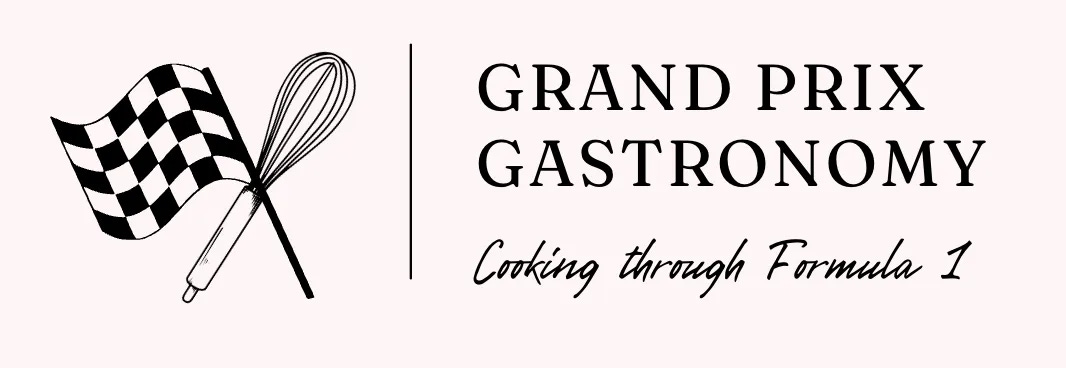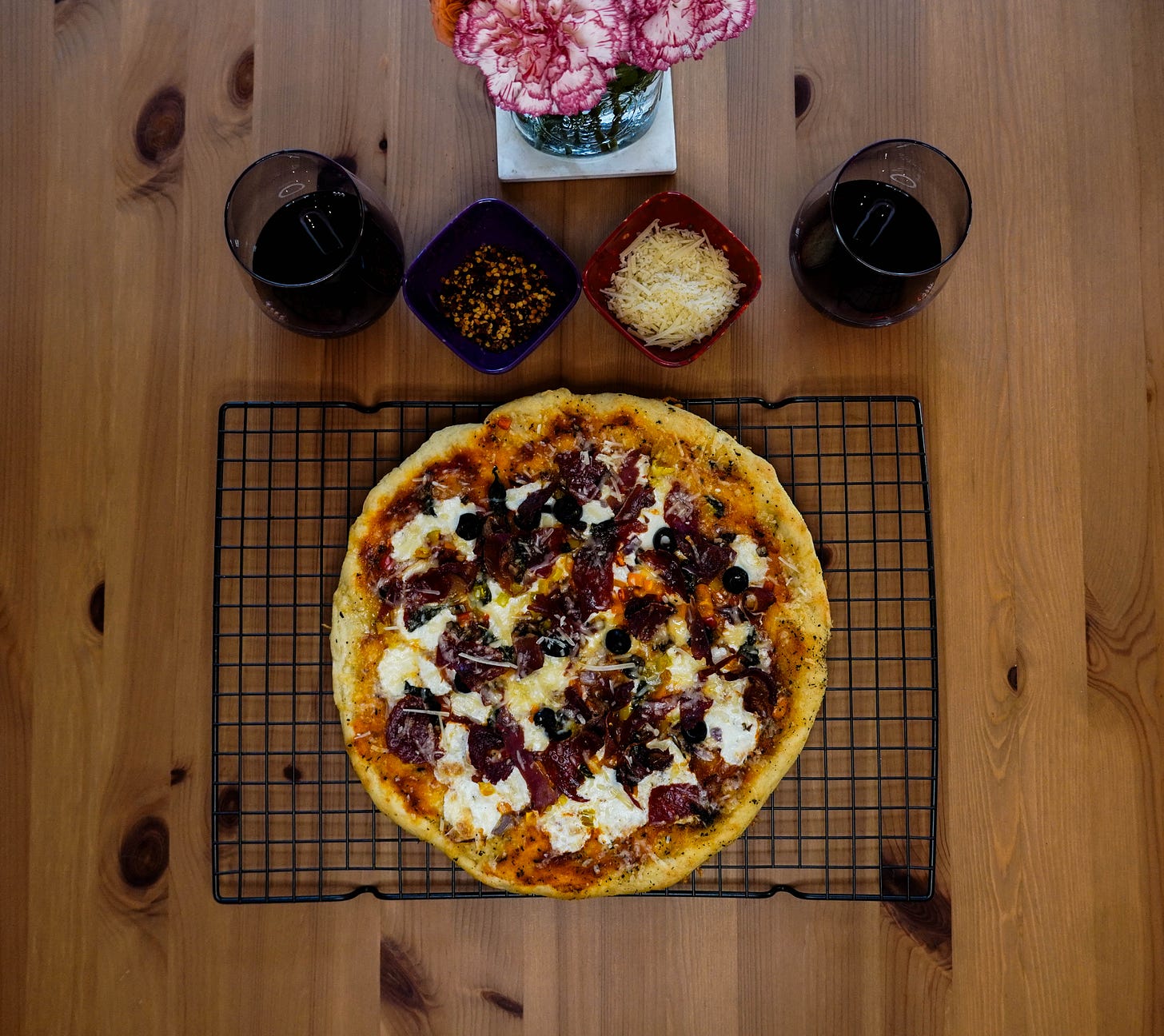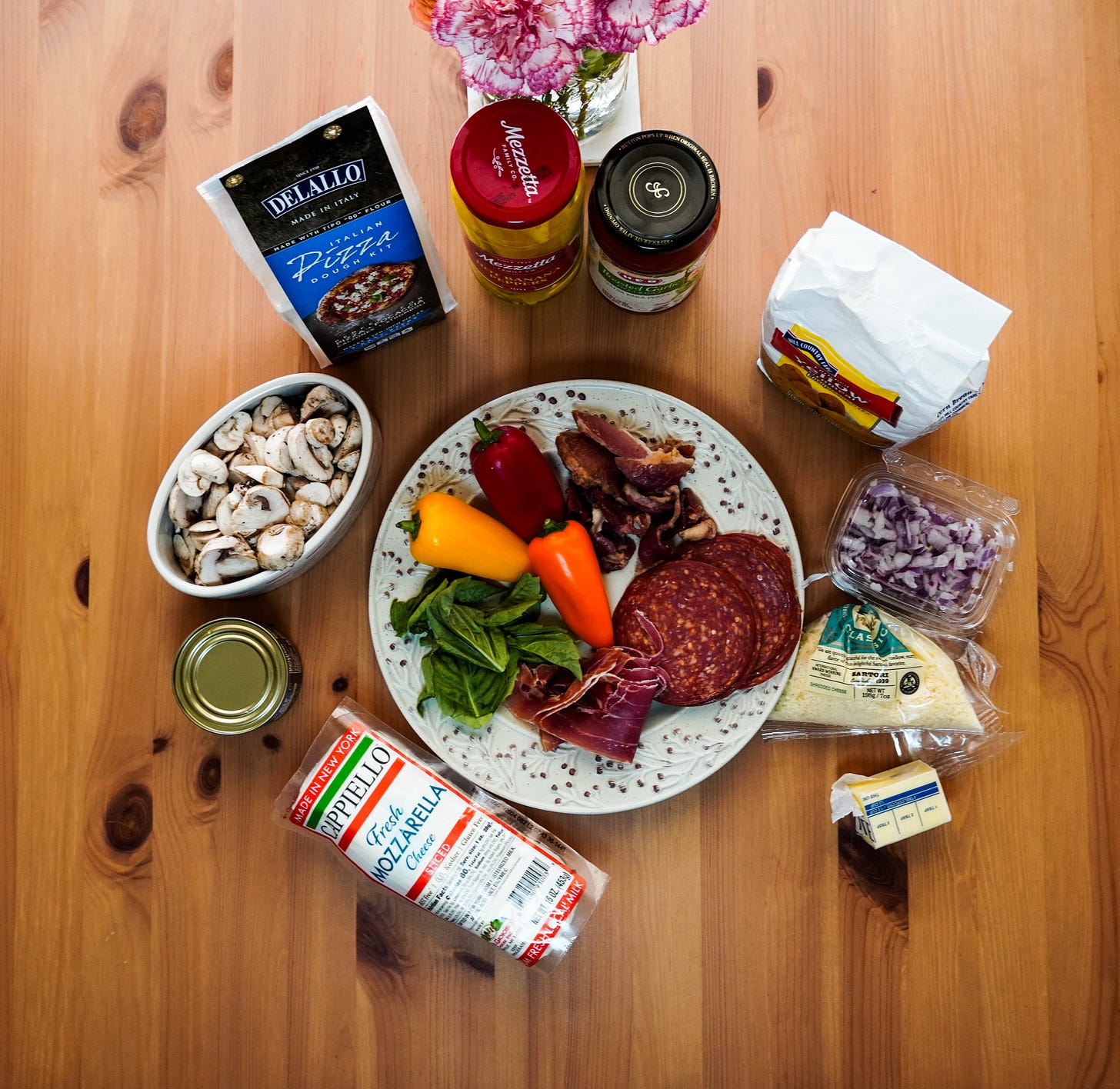Welcome to Grand Prix Gastronomy! In 2024, this series is dedicated to cooking the favorite dishes of every driver on the grid.
EVERYONE Loves Pizza
If you ask a Formula 1 driver for his favorite meal, there's a damn good chance he's going to tell you it's pizza. Fernando Alonso, Daniel Ricciardo, Sergio Perez, Charles Leclerc, Kevin Magnussen, Nico Hulkenberg, Valtteri Bottas, Lando Norris — I'm not even kidding, it's like “pizza” is the default response for these dudes.
While I theoretically could have made a unique pizza for every driver, I decided that'd probably get a little boring. Instead, we're doing a pizza masterclass today!
Now, let me be totally clear: I am not a pizza expert. At multiple points during the cooking process, I told my husband, “We should take a pizza class because I don't know how the hell to make this work.” But this is the down-home, at-home, authentic pizza-making experience that the Blackstocks undertake every few weeks. My goal here is more to show that you don't need a ton of fancy equipment to make a decent pizza — you just need an oven, some dough, and grace for yourself as you figure out the process.
This Week's Recipes
This week, I actually don't have any recipes that I'm working from! I don't like to make things too challenging for myself, so I make a dough out of the DeLallo pizza dough mix that I can buy at the grocery store and top it with various ingredients and sauces that I can also buy at the grocery store — albeit with a few twists when compared to the instructions on the back of the dough kit. If you want to go even simpler, see if any of your local pizza joints will sell you dough; they've usually got plenty hanging around! You can also make your own sauce, grow your own basil, go nuts — whatever makes you happy!
As far as other special tools go, I don't use many for this recipe. I have a dough scraper that I use to separate the dough, plus a round pizza pan with holes, though you can also use a regular baking tray or a pizza stone. I also have a few wire racks that I put on my stovetop; when I pull a pizza out of the oven, I plop it there. Simple!
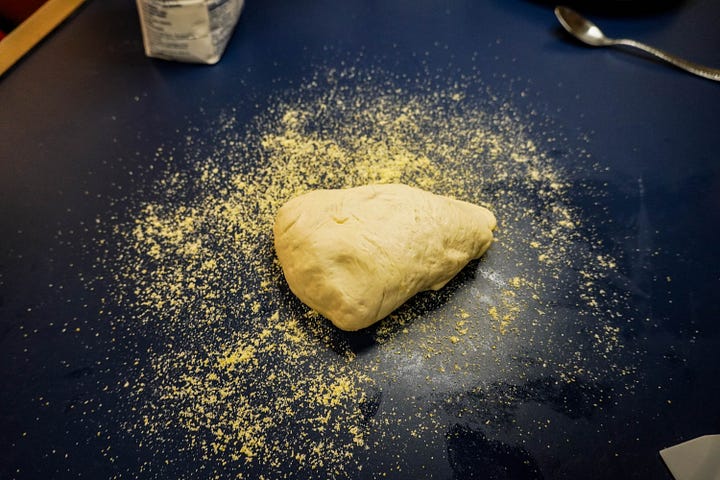
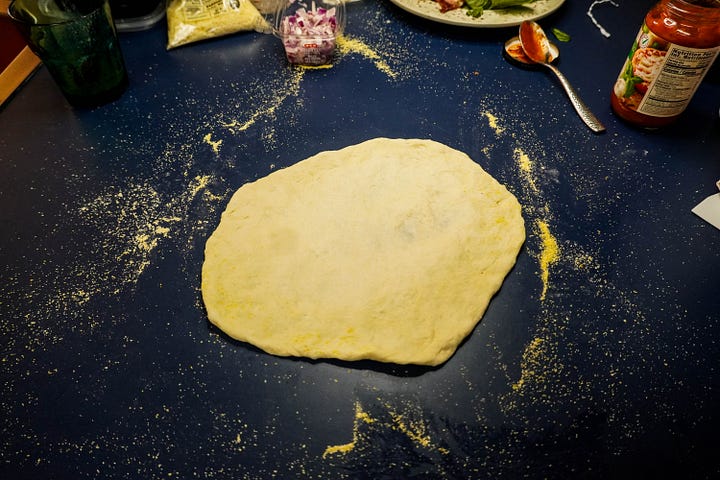

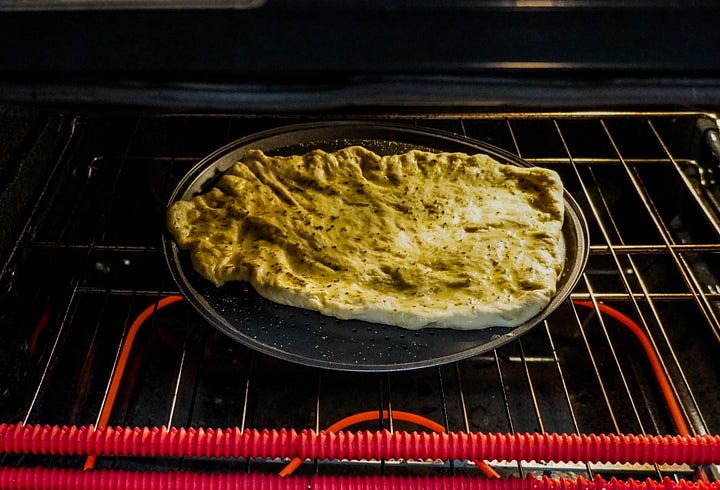
Let's Make Pizza
As I mentioned above, I start off with the DeLallo pizza dough mix as my starting point for all the pizzas I make at home, since it doesn't take a ton of brain power to turn it into something yummy. But as I've worked with this mix, I've noticed a few things.
First, I have trouble stretching the dough. This is absolutely a Me Problem, and I have certainly improved over time, but I have also found a workaround: Instead of overstretching my dough and ripping holes in it, I leave it on the thicker side. My secret here is that I pre-bake the crust with no toppings on it, aside from a brushing of garlic-herb butter. It gives me a base level of flavor and a more robust crust, but it also cooks all the way through much better than it does if I just load it straight up with toppings.
Tied to this, I also really struggled with the whole “get the pizza onto the thing that's going to put it into the oven” part for a really long time. My initial problem was that the dough was sticking to the counter, and I'd commit heinous crimes against Italian cuisine while trying to pry it off. This problem no longer exists now that I've started coating my counter in a bit of cornmeal; it makes it super easy to preserve the general shape of the ‘za.
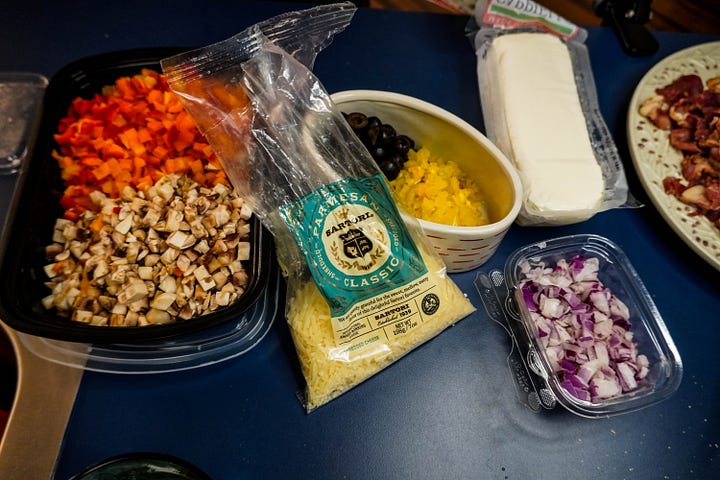
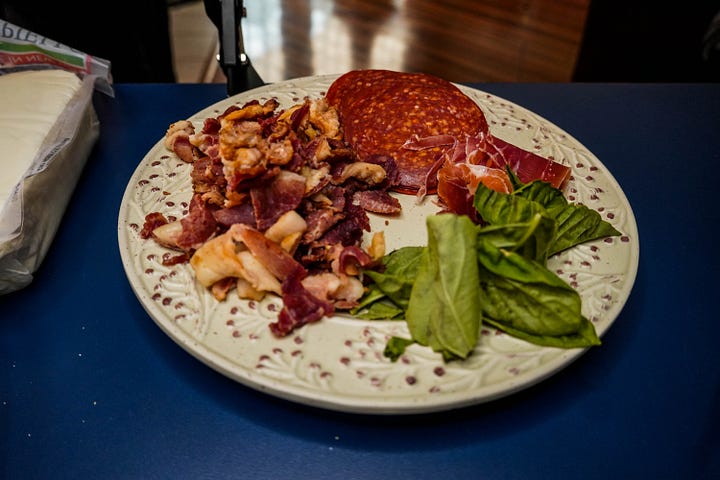
Also, I do not have the skills necessary to top a pizza on my counter and then smoothly transfer it into the oven. Instead, I stretch out my dough, then slap it on my pizza tray (or regular baking tray) before I cover it in garlic butter and pre-bake the crust. Then, I pull the whole tray out and place it on my counter to top the pizza before putting it all back in the oven. It saves transferring mishaps.
So, here we are: I pre-bake my garlic-butter covered crust for about three minutes, then pull it out and cover it in my toppings. Then I stick it back in the oven for 10 minutes. After that, I pull it out and brush the crust with more garlic herb butter and sprinkle it with parmesan. Three more minutes in the oven, and the crust is usually looking pretty golden brown and crisp.
As far as the toppings process goes, don't go too crazy. I'm one of those people who has a very difficult time imagining how much of an ingredient to use in things like pizzas or stir fries, so I end up with a metric shitton of vegetables all piled together. Exercise restraint. You just need two or three tablespoons of sauce — enough to lightly coat the dough, but not saturate it. You need a very small handful of vegetables and a small handful of meat and a small handful of cheese. You do not need to go crazy; too much on your pizza, and your dough will stay a little soggy. It's still tasty, but it's also tough to pick up then. If you're a “knife and fork” pizza eater, then that doesn't really matter; do whatever makes you happy.
Once your pizza is out of the oven, transfer it to a wire rack to cool; the wire rack is great because it prevents any moisture from collecting underneath the warm ‘za and making your crust too soggy. I keep my rack on the stovetop, which is usually pretty warm thanks to the high heat of the oven. If you're doing one pizza at a time, that first one will probably be a little cool by the time you've wrapped up the last — you have my permission to use this first pizza as a snacking pizza, since it's usually the least handsome of the bunch, anyway.
Then, slice and serve! Easy!
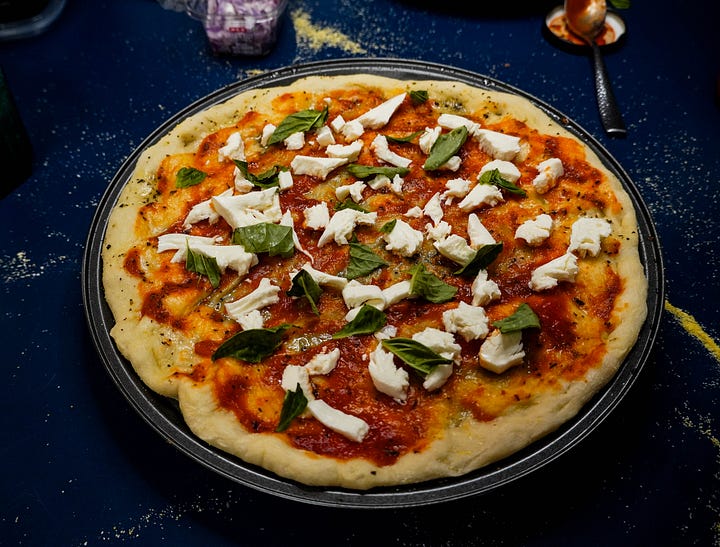
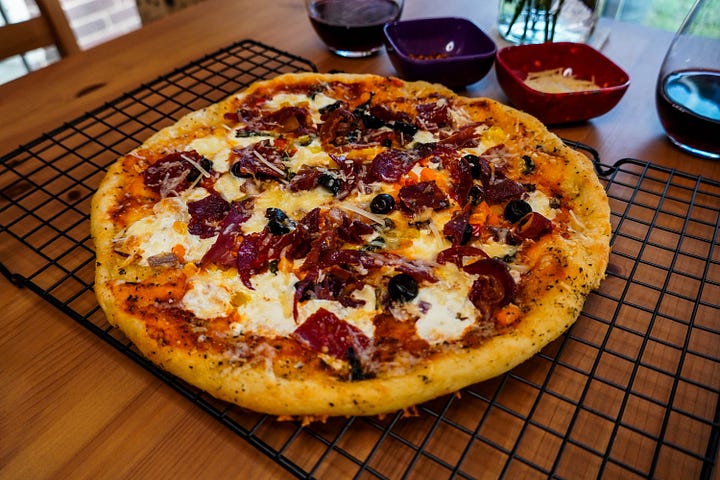
The Wine List
The wine you pair with your pizza depends more on the toppings than pretty much anything else. Since I usually opt for tomato-based sauces and oily meats like pepperoni and bacon, I paired my pizzas this week with a Nero d’Avola wine from Sicily.
Nero d’Avola isn't one of the more popular Sicilian wines, which means you can get it for a great price — but that doesn't mean it isn't delicious. It's full-bodied in the same way that Cabernet Sauvignon or Syrah are. Flavor-wise, it's bold and fruity, though it's more “cherries and prunes” fruity than “strawberries” fruity, and it's pretty tannic, which means that it gives you the sensation of drying out your tongue. It's also a little spicy and acidic; not overwhelmingly so, but enough to slice through any heavy, meaty flavors that might be on your palate.
As a result, Nero d’Avola is great for my pizza for a few reasons. First, tomato sauce can make for a difficult pairing partner, but the wine here has enough acidity and flavor to prevent the marinara sauce from overwhelming your palate. It's also great to kick back against the fattiness of the bacon and pepperoni I used. It's also a delightful wine for beef stews, lamb gyro, sausage-y sauces, and bold cheeses.
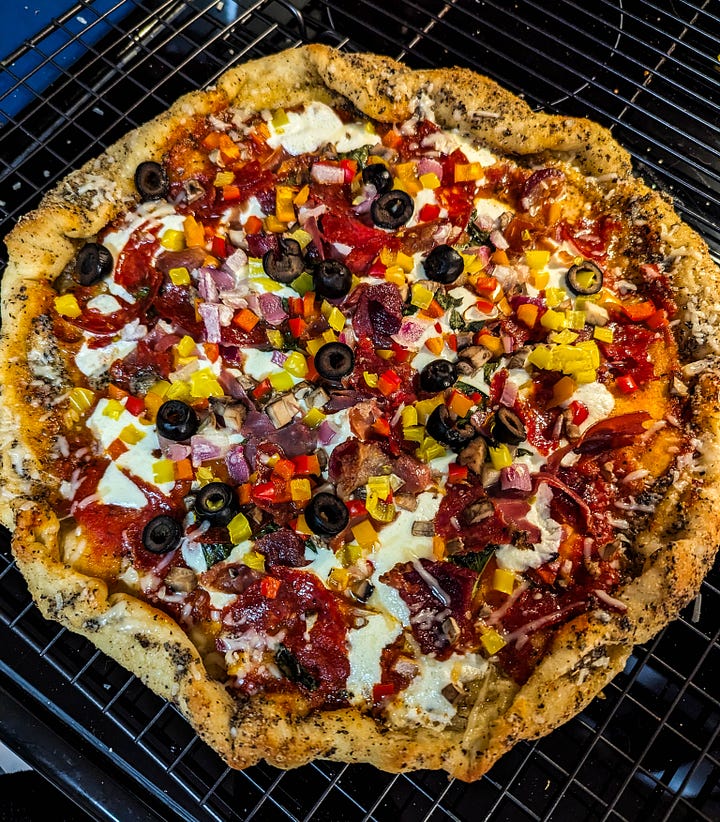
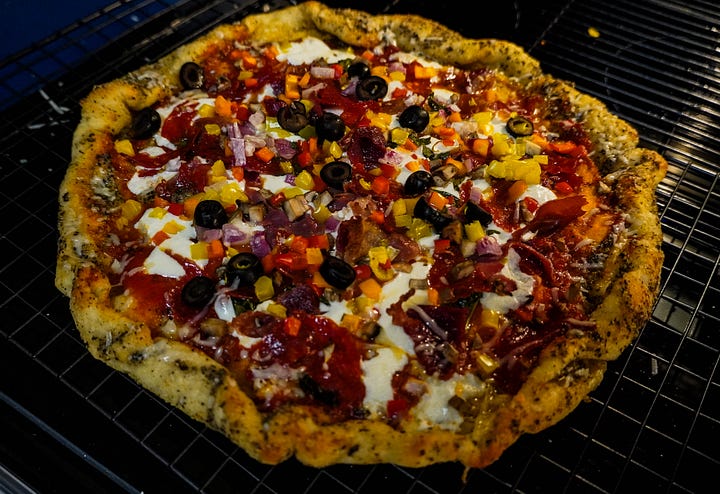
So, What's The Verdict?
This is one of those recipes where it feels kind of silly to issue a verdict, since I am quite literally the one who came up with the recipe that I use — but I'll give you one anyway: this pizza is delicious. Not perfect, but delicious.
I'll be totally honest: The first time I made pizza at home, it was a hot mess. The dough was either too thick, or so thin it would rip. It was a little gummy. Sometimes, I messed the dough up so bad that I just made a pizza roll-up instead. I've never managed to burn my pizza, but I've also never totally perfected that crisp crust.
If you think I'm lying, here is a collage of my first two pizza attempts:

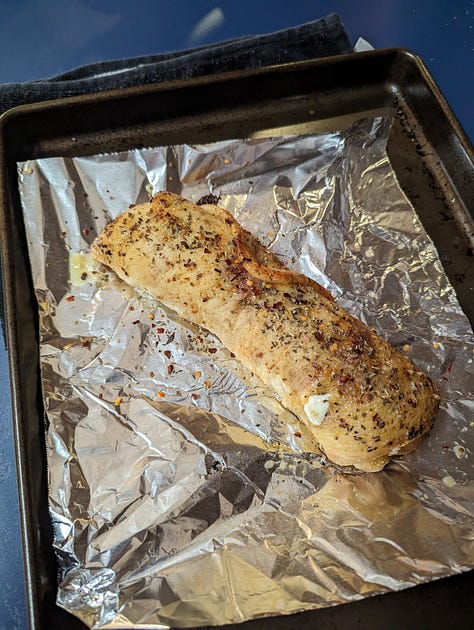
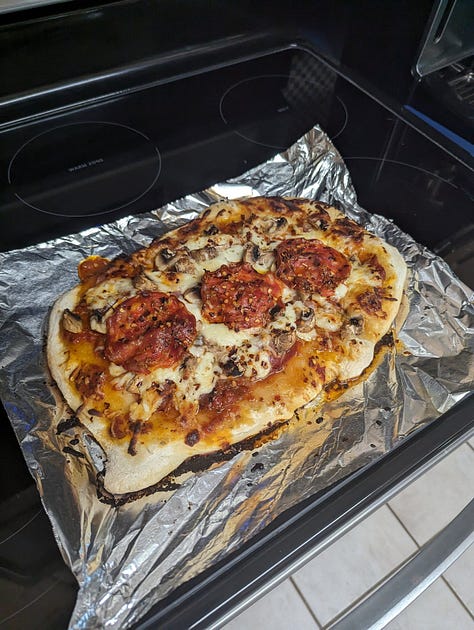
Those are not handsome pies, but you know what they were? Frickin delicious. It is honestly really hard to screw up pizza, even if your dough ends up full of holes or too thick or uneven or any other wild possibility. The combination of dough, sauce, and cheese can be tasty no matter what.
But to me, the coolest part is that I get closer and closer to a really great product every time. Every time I've made pizza, I've looked at at least one of my finished pies and said, “This is my best one yet.” Every single time! And with endless combinations and tweaks and preparations, I am never not having tons of fun.
That's what I meant earlier when I said you need some grace. If you're new to the pizza process, it can be challenging. It probably isn't going to look picture perfect, and you're probably going to spend part of your cooking process wondering how on earth this is supposed to turn out. But it will turn out — just be kind to yourself if it isn't perfect, and enjoy the finished product no matter what.
Ready… Set… COOK!
If you’re interested in seeing the progression of Grand Prix Gastronomy, you’ll be able to do so in a few places. Instagram will feature most of the visual content, while Substack will be a little wordier. If you need a handy mid-week roundup, you’ll be able to find those on Twitter.
Here are all the relevant links in one place, if you want to subscribe:
All Grand Prix Gastronomy-related content will be free — but if you want to drop me a donation on PayPal, that’s always welcome.
Plus, if you're looking to delve deeper into motorsport history, don't forget to check out my new podcast, Deadly Passions, Terrible Joys! I have a Patreon; sign up, and you'll receive extra content!





